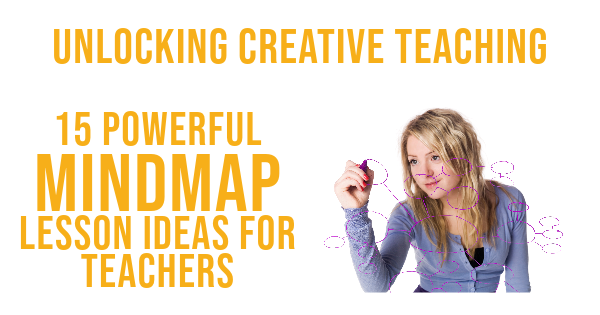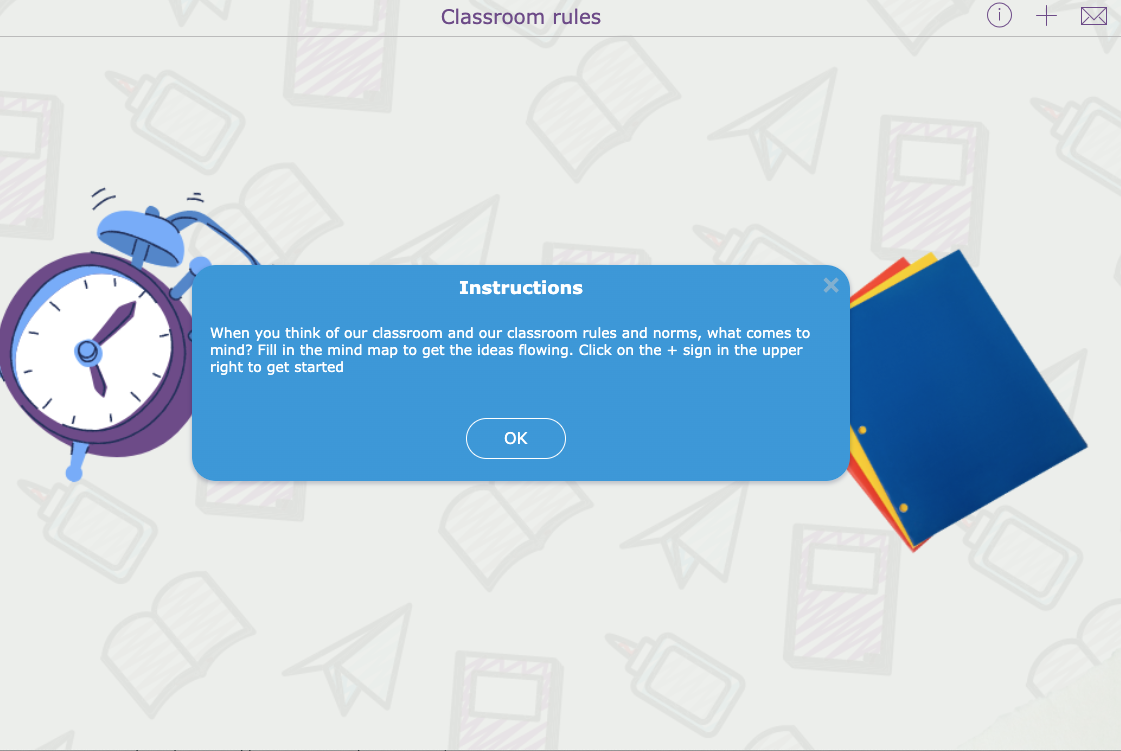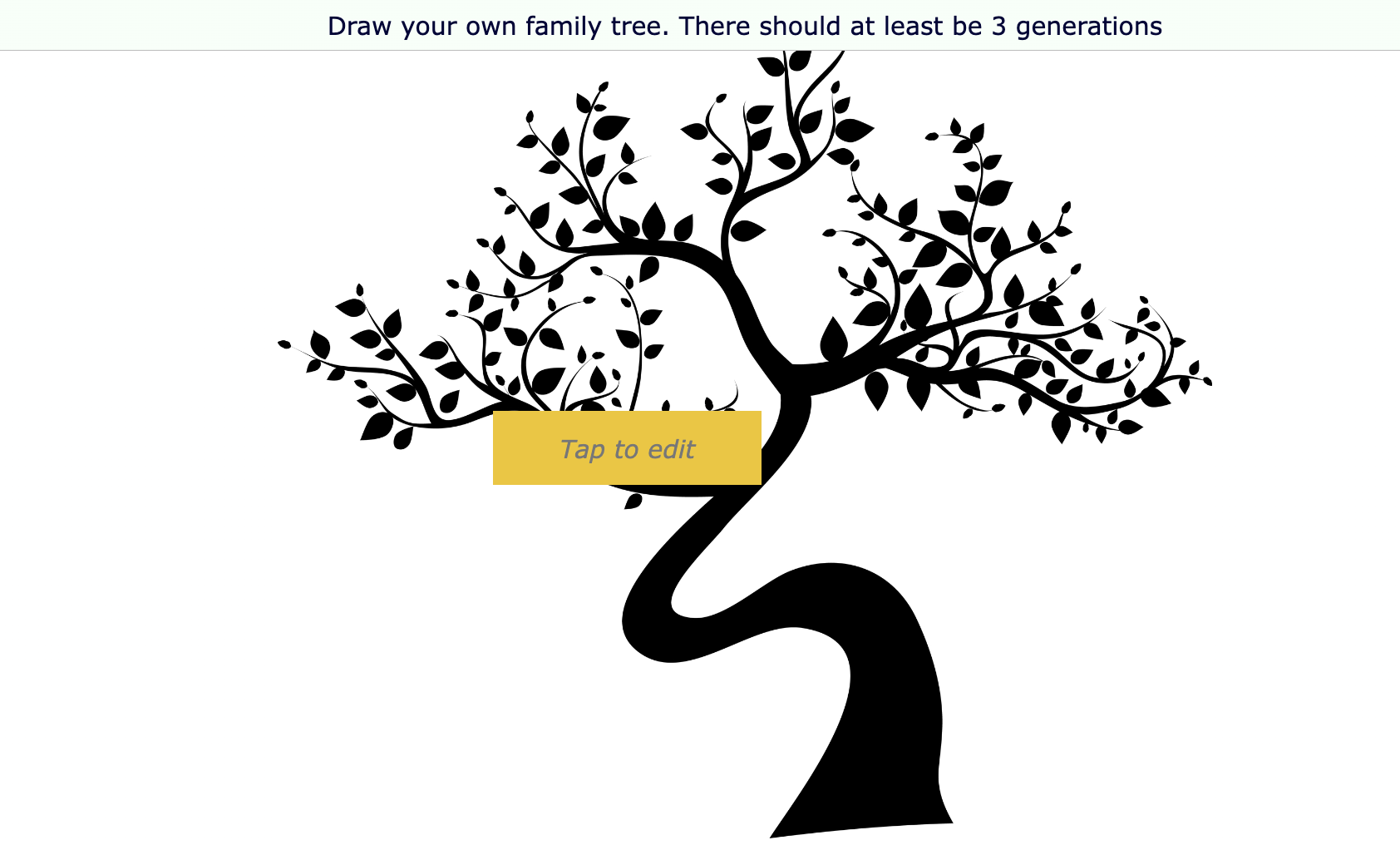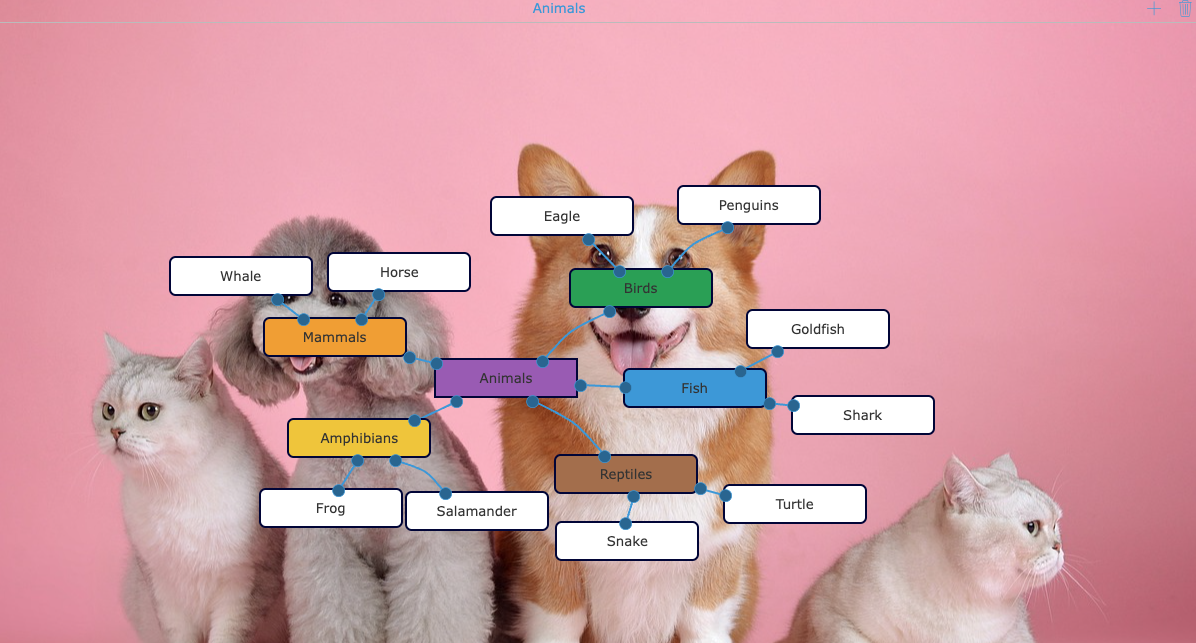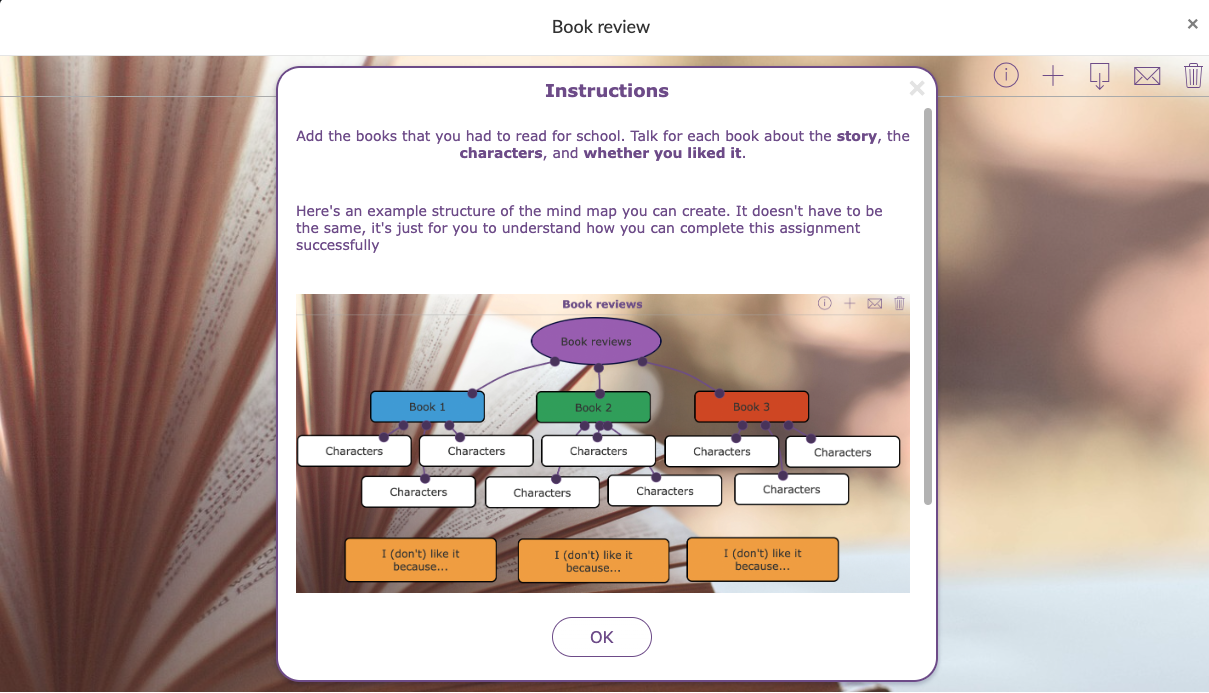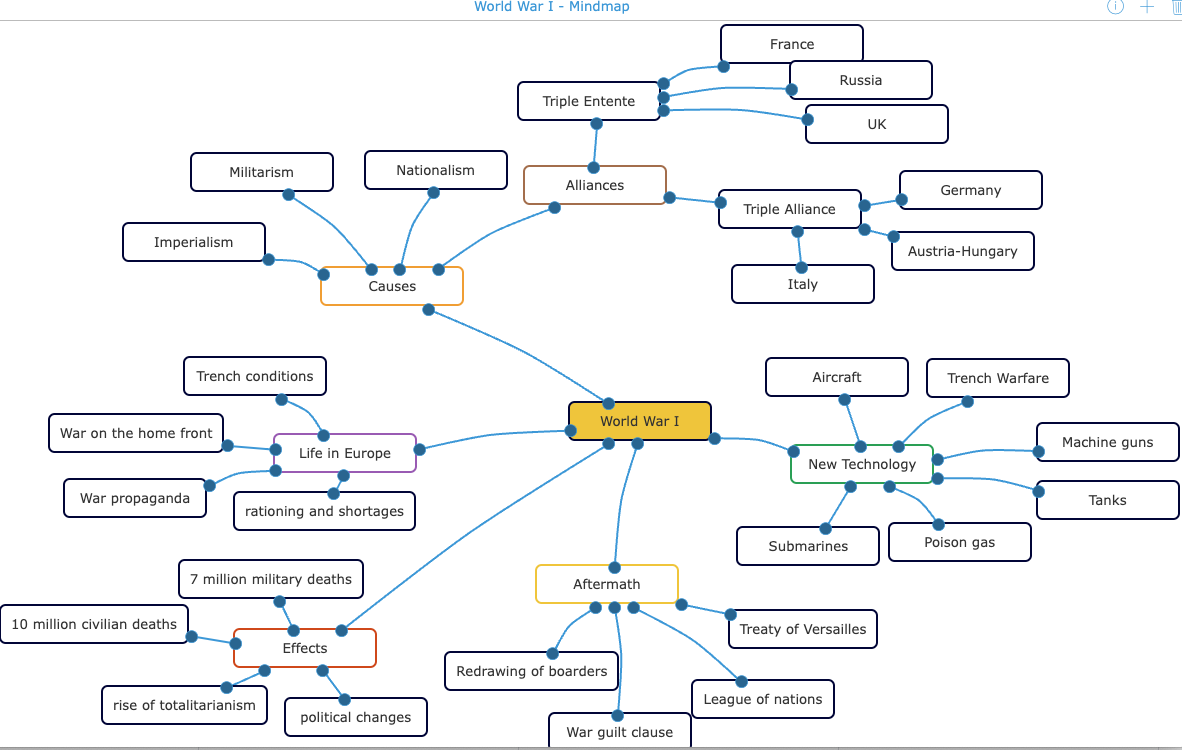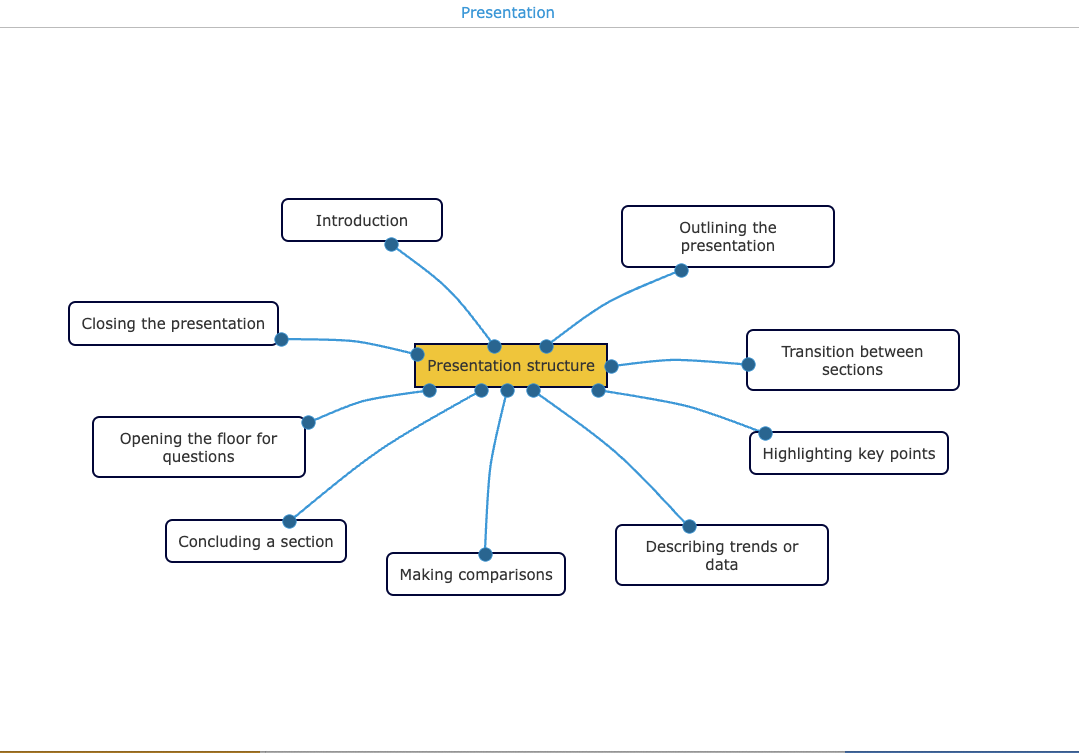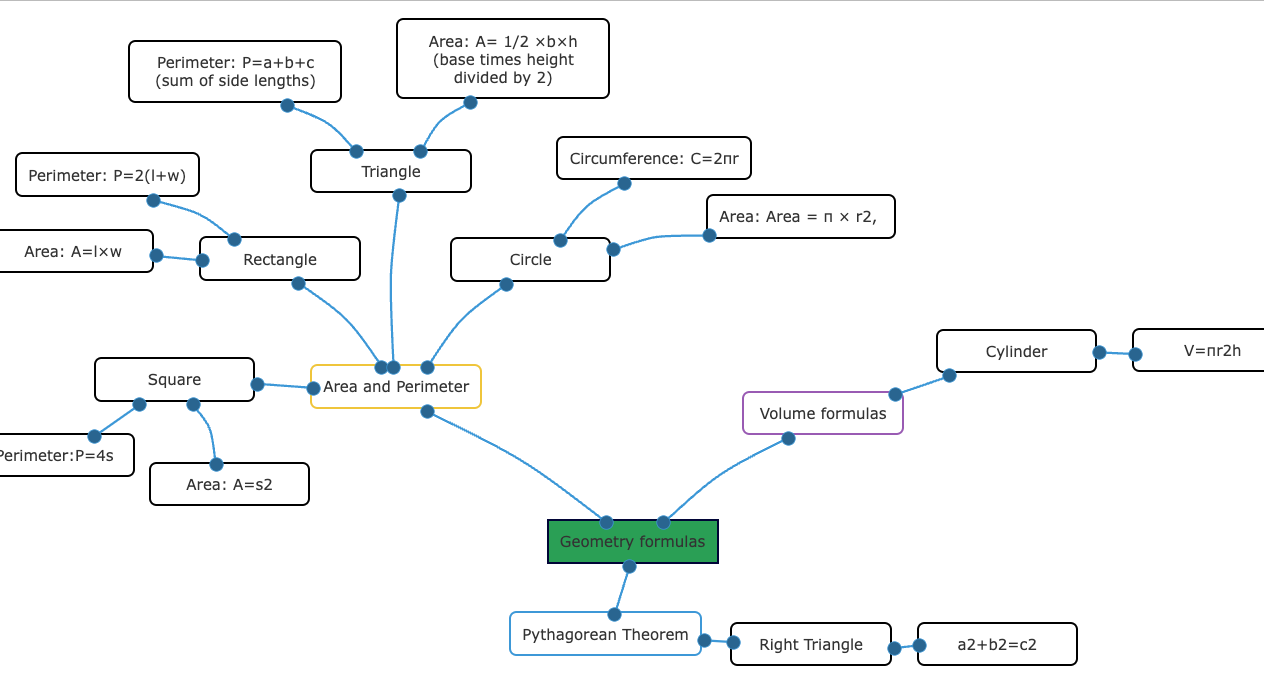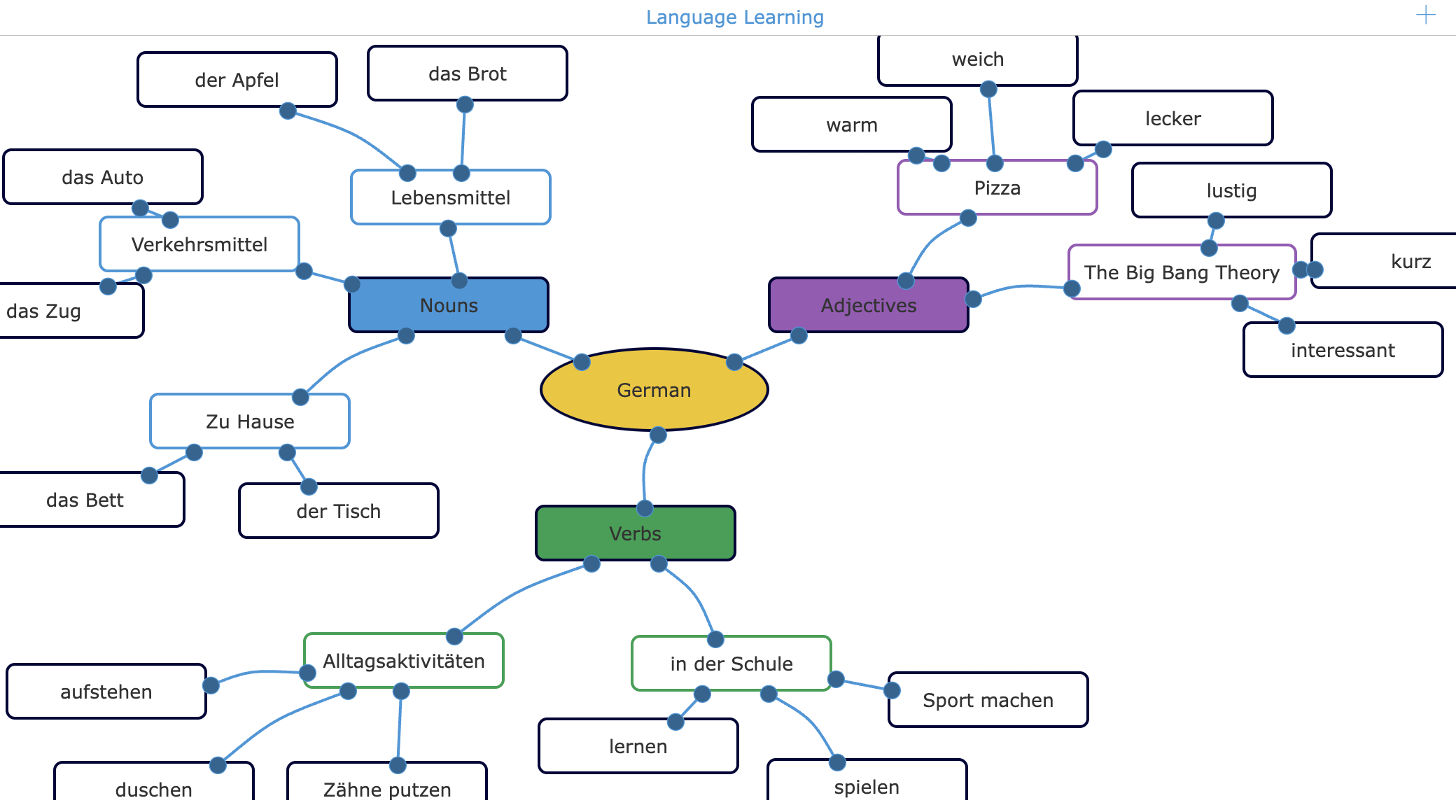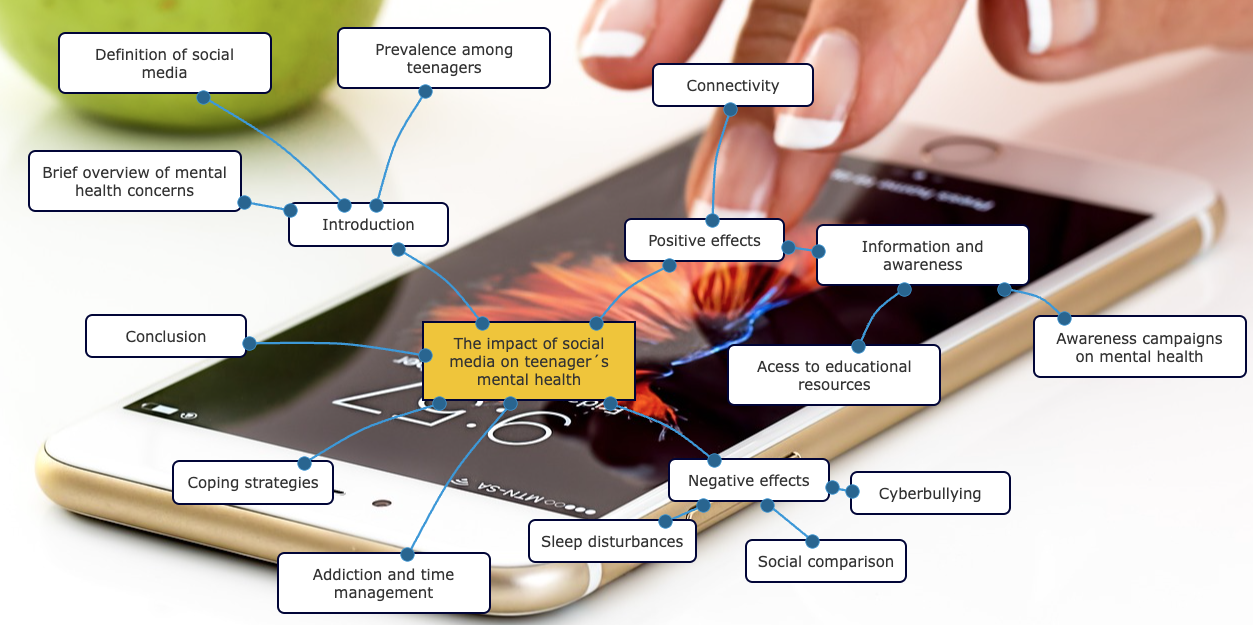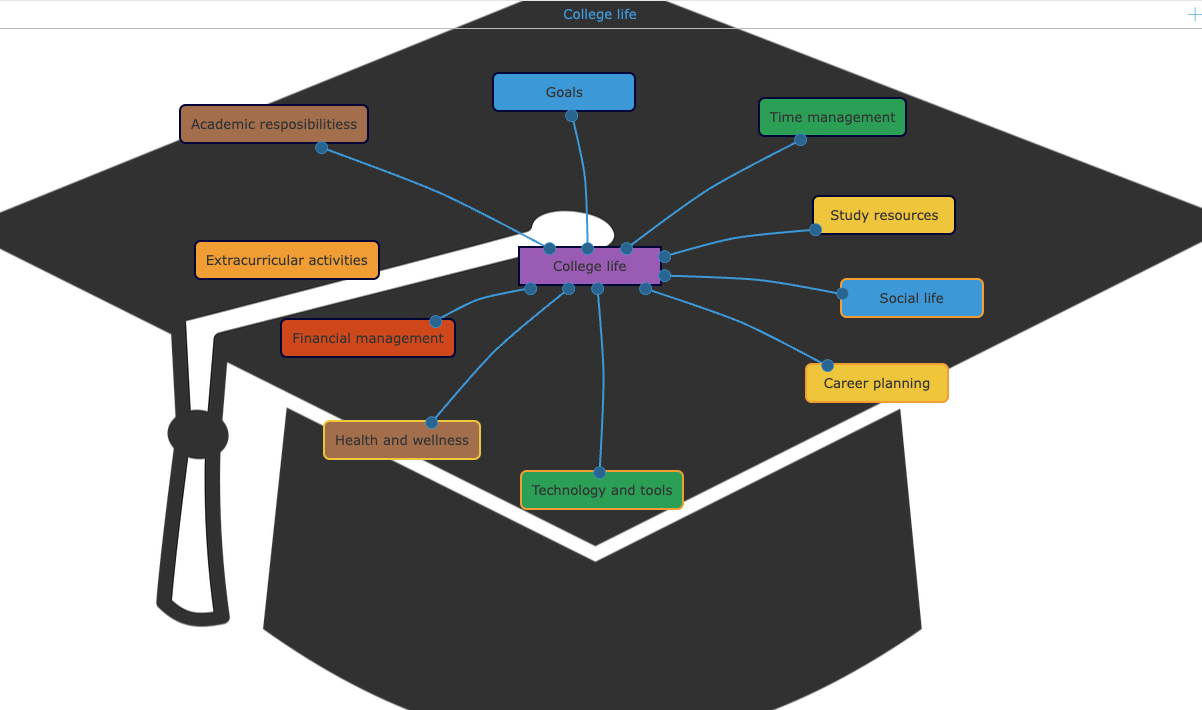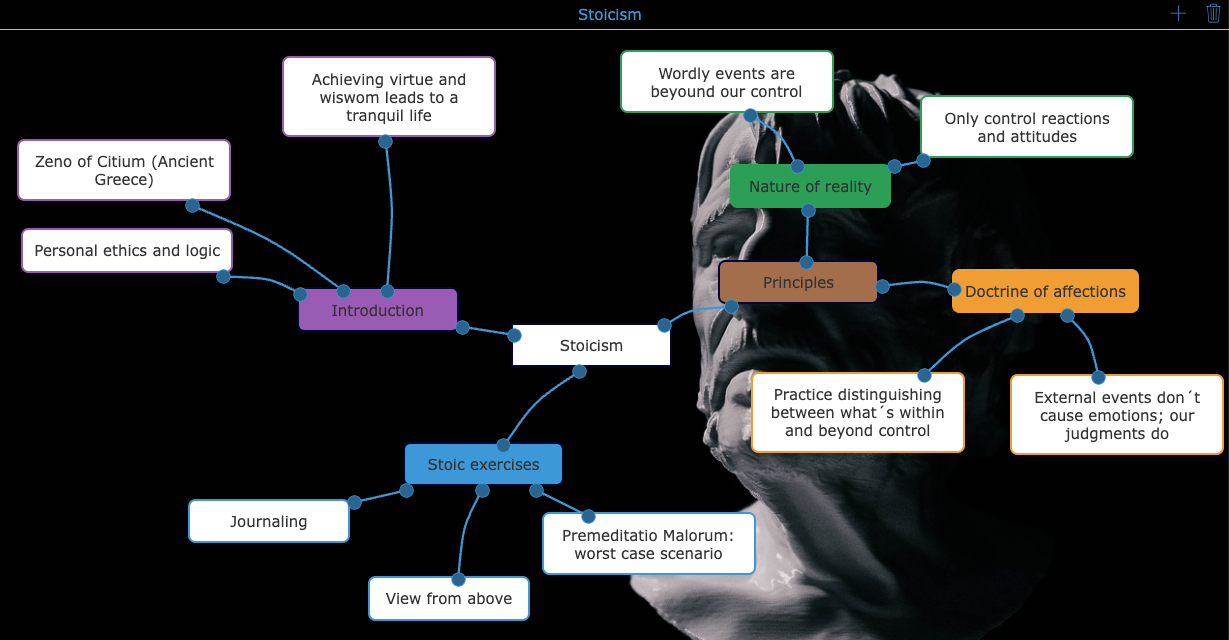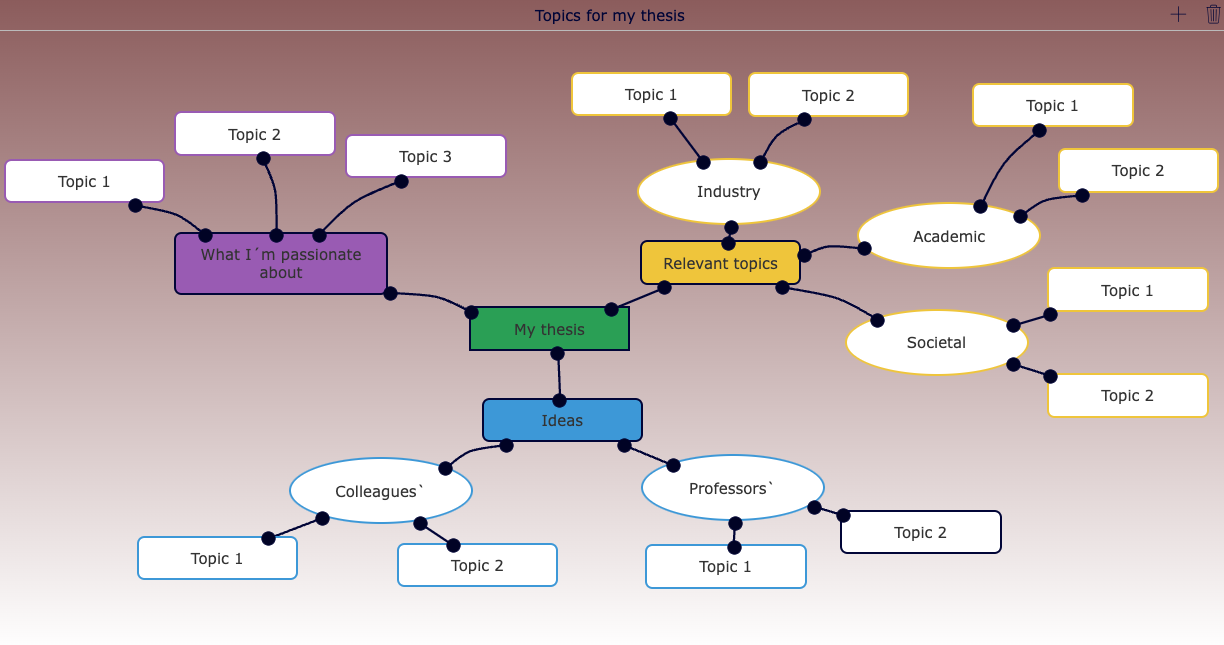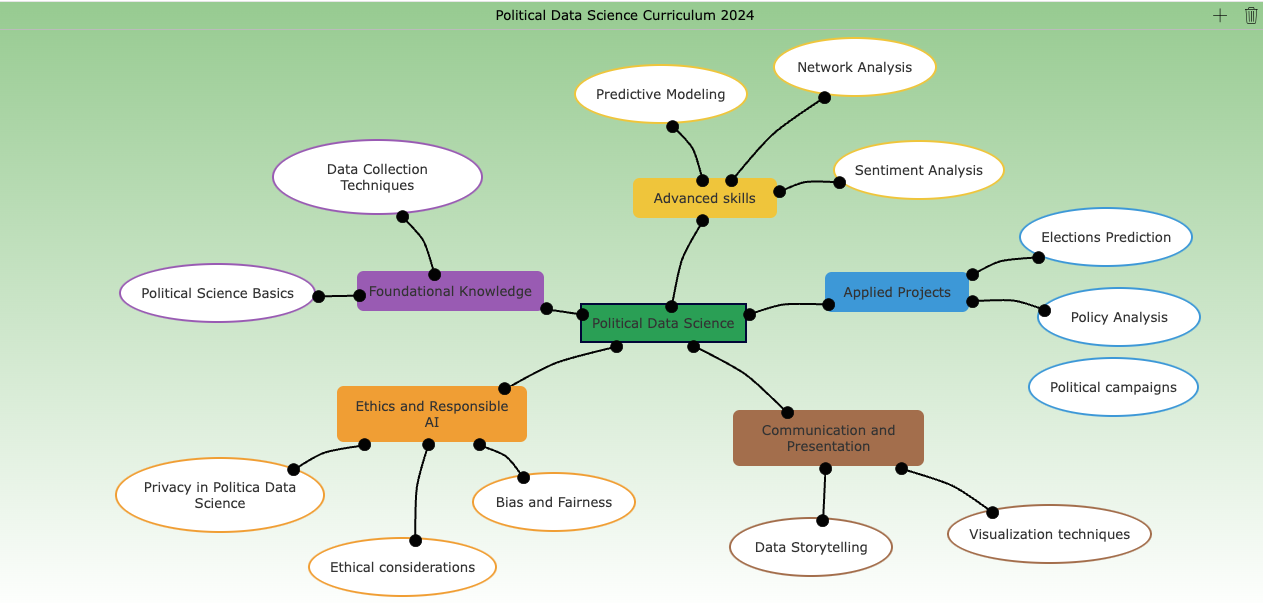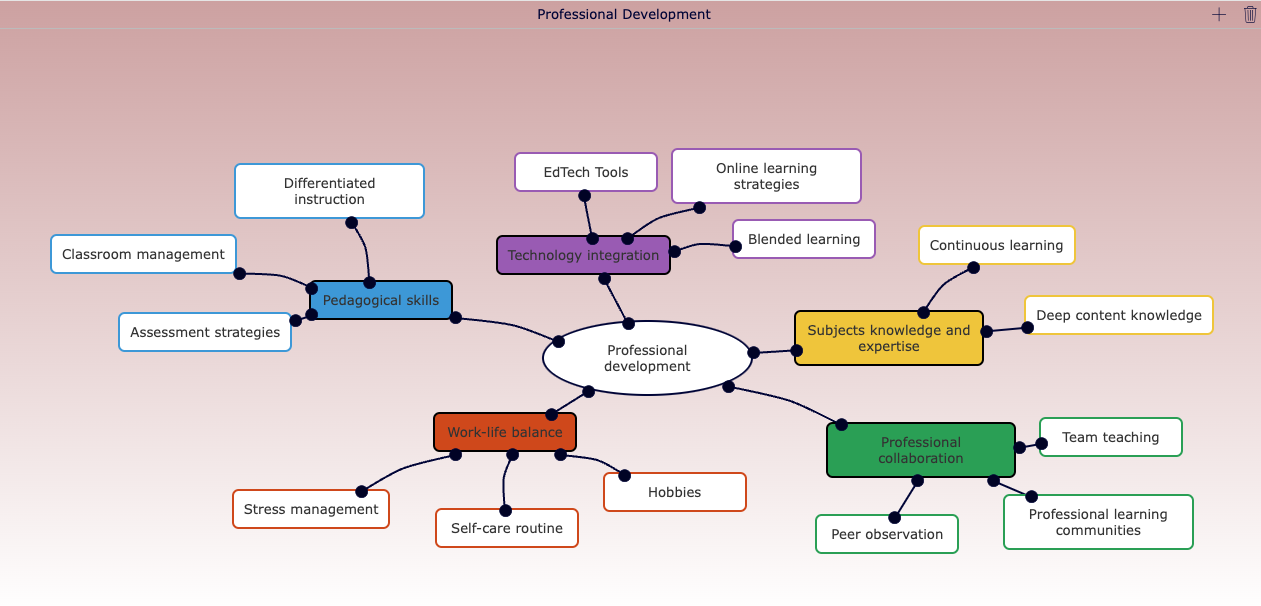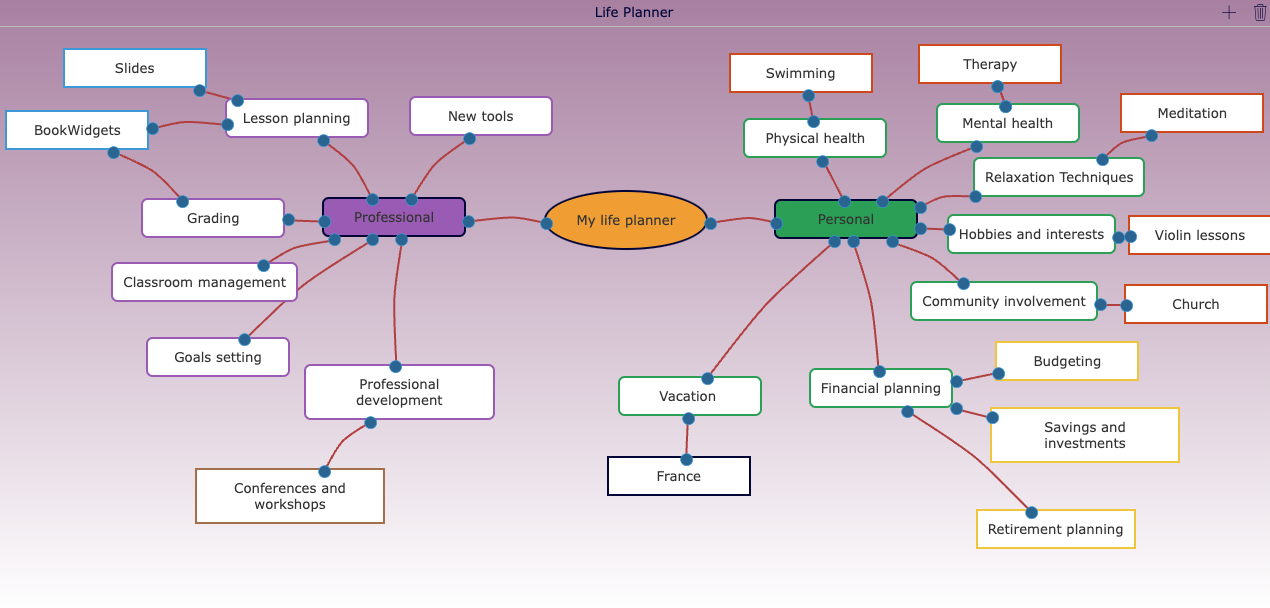15 Powerful Mindmap Lesson Ideas for Teachers to Unlock Creative Teaching
 Julia Barreiro —
Julia Barreiro —
Teachers are constantly seeking innovative ways to engage students and enhance learning experiences. Mindmaps have proven to be powerful tools that facilitate visual thinking and foster collaboration and creativity in the classroom. In this blog post, I´ll explore exciting ideas for teachers to integrate mindmaps into their teaching and personal repertoire. All of the mindmaps for this blog post have been created with BookWidgets and can be easily duplicated and shared with your students. Regardless of your subject and grade, implementing mindmaps in your classroom is guaranteed to retain your students´ attention and engage them.
For organizational purposes, I´ve separated my ideas into different categories.
- Mindmaps for elementary school
- Mindmaps for middle school
- Mindmaps for high school
- Mindmaps for higher education
- Mindmaps for teachers
💡 Before we begin: As you will see, I’ve created the mindmaps using BookWidgets. You can create your own or duplicate mine (open the activity and make a copy in your account) and use it in your classroom. After duplicating, you can even make changes to the activity. Keep in mind that since they´re mindmaps, the content I created for the examples won´t be shown. Your students will create their own. If you’re new to BookWidgets, let me briefly explain: BookWidgets is a content creation and evaluation tool for teachers, and a Mindmap is one for the 40 Widgets (digital activity templates) available. By clicking on this link you can access all mind maps mentioned in this blog post and duplicate them.
💡 Keep in mind: If you create a Mind Map on BookWidgets, you can use “Live Widgets” to keep an eye on your students’ progress to give feedback and support when needed. Check the image below to understand what you’ll see when you open the Live Widgets Dashboard. 👇
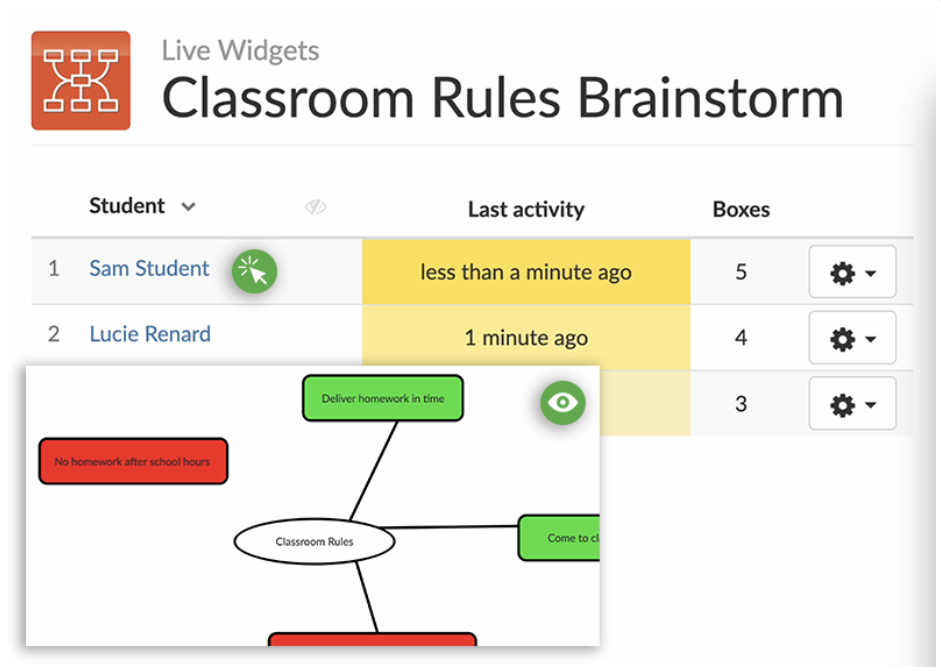

Mind maps for elementary school
1. Classroom Rules

This collaborative mindmap brings students in groups on the first day of school to discuss what they think the classroom rules should be. Mindmaps are then shared with the whole class and discussed, and, with the teacher, a final version of the mindmap is designed.
💡 Pro tip: Doing this digitally allows teachers to easily share it with all the students and parents. Your students hit the envelope to sumbit their answers to you, the teacher. Gather all the rules and create a Canva classroom rules poster with the final rules.
2. Family Tree

If there is a project that every single student has made in their early school years, this is it. When children make a family tree, they better understand that the concept of family might be broader than they had expected. By getting information about their relatives, they sometimes find out their roots go deep and that they have connections to different cultures, which gives way to exciting discoveries. Students should put themselves in the center of the mindmap and branch out, adding names of their parents, siblings, uncles and aunts, grandparents, great-grandparents, etc.
💡 Pro tip: Add a nice background picture to your mind map to make it more visually appealing to your students. In this case, the background image is an important part of the lesson.
3. Animals - A Review

Mindmaps are powerful tools to review content as well. The teacher picks a topic - for instance, animals-, and has students individually review the information learned. For this, students can review the information the way it makes more sense to them: By habitat, by animal group, by size, by personal liking, etc. You will be surprised by the different connections students make to one main topic when they can organize information how they see fit. A mindmap gives him exactly that.
💡 Pro tip: To warm students up for this activity, start the class with a fun pair-matching game like this.

Mind maps for middle school
4. Book Review

When assigning a book review, have students organize the information about the book read in a mindmap: Plot, characters, background, narrative, etc. By doing that, students develop a powerful strategy to prepare for a written production requiring different information. Besides creating one mindmap for each book they read, have students create another mindmap with the primary information about all the books they read in one school year. This is a convenient way to access critical information about all the books and review them easily. Here´s an example that you can duplicate and share.
💡 Pro tip: Show your students an example of how a book review organized in a mind map looks like. You can do this by showing “instructions” before students get started. In the instructions you show an image of what you want your students to do. Students can always bring back instructions by clicking the “i” icon.
5. History class

History classes and mindmaps are a match made in heaven, especially for teachers who believe in teaching History from different perspectives and promoting critical thinking and not just making it about stating facts and dates. Divide the class in different groups and assign one subtopic of the same main topic to each group. Students create a mindmap about that subtopic after learning and gathering information about it. Then, have students from different groups sit together, so that each group now has students with different mindmaps. The new groups then create a final version of a mindmap, with different perspectives about the same main topic. This activity is highly collaborative and exchanging information among students from different original groups will keep them engaged.
💡 Pro tip: Brainstorm with your students the essential subtopics of a central topic. Below is an example of a mindmap used to teach World War I.
6. Structuring presentations

In middle school, it is essential to show students strategies to help them organize and structure their presentations. Mindmaps can be used for brainstorming, reviewing, and collaborative work. Besides all that, it can also be used as a way to structure information, like useful phrases for presentations. When assigning a presentation, encourage students to create a mindmap - in a group or individually- gathering useful phrases for introduction, describing data, concluding a section, etc.
💡 Pro tip: Ask students to do this digitally and share with the class one mindmap that is very comprehensive and can be used as a model for the entire class. Below you can see an example of what this looks like.

Mind maps for high school
7. Mathematics: Geometry formulas

Regardless the subject you teach, students can benefit from organizing information on a mindmap, especially for more complex topics like geometry formulas. This powerful study aid will save your students time and energy. In this example, Geometry Formulas serve as the main branch. Area and Perimeter, Pythagorean Theorem, and Volume Formulas are the main categories. Each of those will have subcategories where the students can write the formulas.
💡 Pro tip: Encourage students to have all the formulas on one single mindmap like the one below. By doing so, they can easily access them whenever needed.
8. Building vocabulary

In the realm of high school language learning, mindmaps emerge as potent aids for building foreign language vocabulary. Initiate the process by placing the target language at the center of your mind map. Branch out with main categories such as nouns, verbs, and adjectives, assigning each its distinct color for clarity. Extend further to include thematic clusters, linking related words and expressions. Sub-branches can encapsulate synonyms, antonyms, or common phrases, facilitating a comprehensive understanding. The organic structure of mind maps mirrors the interconnected nature of language, offering high school students a dynamic and engaging approach to expanding their foreign language vocabulary.
💡 Pro tip: Another great way to build - and study - vocabulary is by using Flashcards. Check out this example of a set of digital flashcards we created with BookWidgets. Here we combine picture and audio on one side and text on the other.
9. Structuring written production

In high school, harnessing the power of mind maps proves instrumental in structuring written productions effectively. Begin by placing the main topic or thesis in the center of the map, creating a visual focal point. Branch out to represent major sections or key arguments, ensuring a logical flow in your composition. Sub-branches can delve into supporting details, examples, or counterarguments, fostering a deeper understanding of the topic. The flexibility of mind maps allows for easy rearrangement, ensuring a dynamic and coherent structure for essays, reports, or any written assignment, like in the example below.

Mind maps for higher education
10. Organizing college life

Starting college life can be overwhelming since it presents quite a significant change compared to high school dynamics. Using mind maps for student organization can come in handy. Suggesting your students that they gather all the different aspects of this new life dynamics right at the beginning of the school year will show them that you care about their performance. Provide them with a template and have them work with the mindmap individually or in groups. That will help them keep track of all of their responsibilities, feel less overwhelmed, and possibly have a positive impact on their academic performance.
💡 Pro tip: Encourage students to use colors to better visualize the different aspects in the mind map.
11. Organizing lectures material

University students of the 21st century often don´t take notes in their lectures. Instead, they either get the PDF of their professor´s lecturers or take pictures of their presentations. However, it´s crucial that they, at some point, review and organize the topic taught in each lecture. An easy and efficient way to do it - you guessed it - is by using a mindmap. Students can do it individually or implement it in study groups, fostering collaboration with other students.
💡 Pro tip: Leave the theme box empty so students can fill it with their lecture topic or course subject.
12. Brainstorming topics for the thesis

Towards the end of university life, students need to decide their thesis topic. Brainstorming topics of interest on the mindmap helps visualize, contrast, and compare different ideas. Students become less overwhelmed and can ask for their professors’ and classmates´ opinions to help them make the right decision.
💡 Pro tip: Students can share their mindmaps with classmates and professors to get their opinions and input before making the final choice.

Mind maps for teachers
13. Curriculum planning
 Teachers and professors can use mindmaps to outline and organize the curriculum for the academic year. Break down subjects into units, and key concepts. Ensure to include links to additional resources, such as a bibliography and videos.
Teachers and professors can use mindmaps to outline and organize the curriculum for the academic year. Break down subjects into units, and key concepts. Ensure to include links to additional resources, such as a bibliography and videos.
💡 Pro tip: Give Artificial Intelligence, like ChatGPT, a try to help you outline your curriculum and lesson plans. Check out this post with powerful Chatgpt prompts for teachers.
14. Professional Development

Create mindmaps to plan professional development goals and activities. Include branches for workshops, conferences, and ongoing learning opportunities. Include online webinars, videos, and books that help deepen your knowledge in your area. Make sure to track your progress in acquiring new skills or implementing innovative teaching.
15. Organizing your life and routine

For busy people like teachers and professors, using a life planner can show an effective way to have an overview of all the responsabilities and opportunities in different areas. It also helps you keep track of your progress and adjust whenever needed. Mindmaps can also be used for this purpose. Branch out different aspects of your life and list everything connected to it. Use colors and shapes to differentiate areas and aspects.
💡 Pro tip: Take a look at this blog post with digital ready-to-use lifeplanners if you don´t want to start from scratch.
Wrap up
As you can see, mindmaps are versatile tools that can accompany students’ and teachers’ lives starting in elementary schools. Whether brainstorming, organizing ideas and systems, collaborating with peers, reviewing content, or planning, they are always convenient and exciting. If you decide to mindmap digitally, there´s the advantage of expanding one single map as much as you want and accessing it anytime, anywhere. Besides, it makes it easy to share with others if you need an extra set of eyes or are collaborating with someone. What´s your first mindmap going to be used for? Have fun!
You can find all ready-to-use activities used in the examples here and duplicate them to your own account in order to edit them and share them with your students.
I’d like to know which of these activities is your favorite and what other ideas you have, so do share with us. Let us know on Twitter - X - and join our Facebook community to share your first history BookWidgets activity with other teachers.
Feel free to connect with me on LinkedIn. I’m looking forward to hearing from you.
